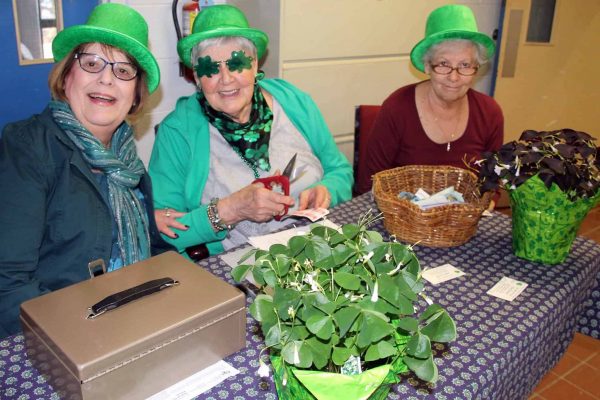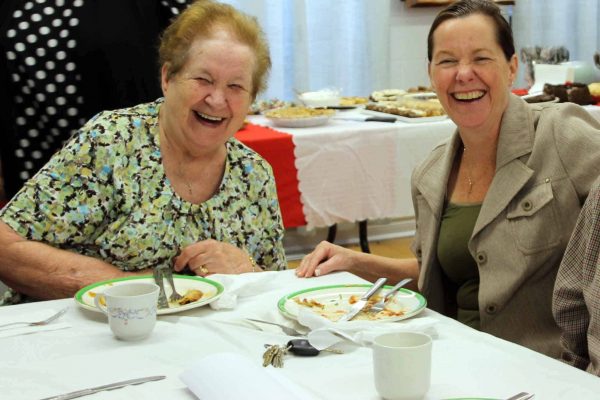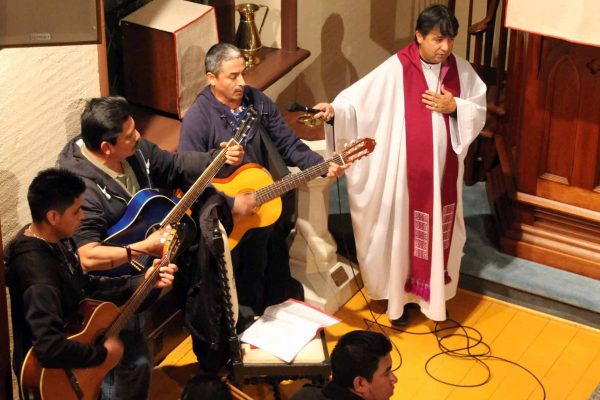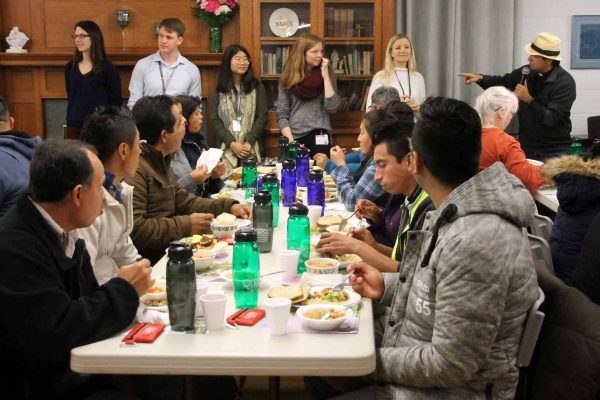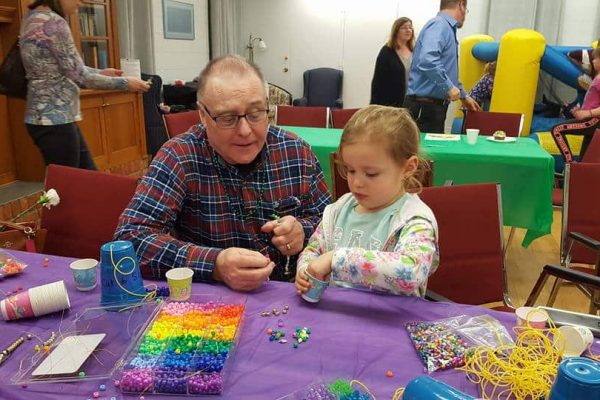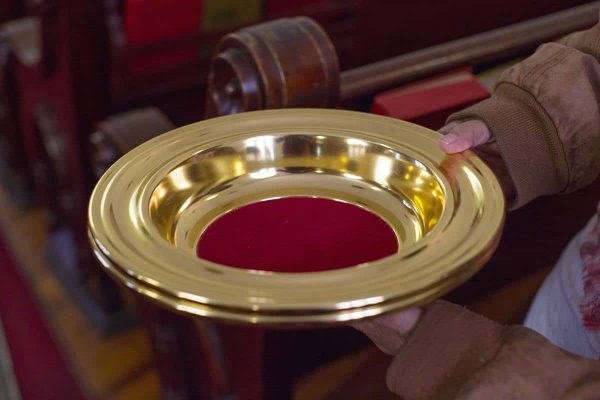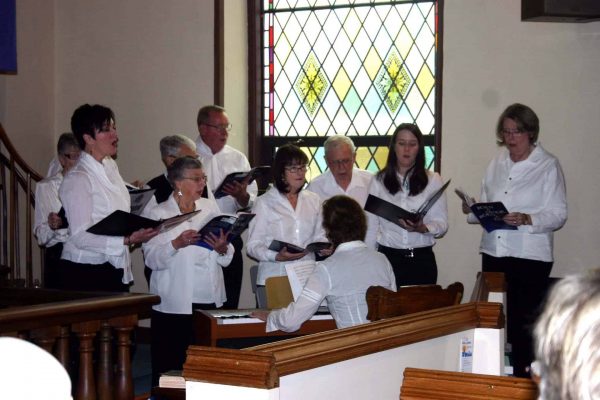1841:
In 1841 Jordan was already an established village on the Queenston to Grimsby stage coach route. For many years, St. John’s Drive was a toll road too!
The land upon which the church now stands was part of a parcel of land granted by the Crown on the 23rd of June 1803, to Thomas Butler, Sr., and others. This subsequently passed by sale to George Ball. A deed dated October 26th, 1841, from said George Ball to the Bishop of Toronto in trust, conveyed four acres of this land, being part of Lot. No. 18, in the fifth concession of the Township of Louth, for the consideration of five shillings, for St. John’s Church, Jordan.
Construction of St. John’s began in June1841 by local stone masons Andrew Dalrymple and Newton Perry. The first service was held in 1842, but the church was not dedicated until May 15, 1854. At that time, all of Niagara was under the Diocese of Toronto and the leadership of Bishop Strachan. The Diocese of Niagara was not formed unti1875.
An undated memorandum states that our church building cost a little more than 559 British Pounds. Two grants were received from England – one for 45 Pounds from the Propagation of the Gospel and the other for 69 Pounds from the Society for Promoting Christian Knowledge. At the time, an acre of cleared land in 1850 was worth 7 Pounds 3 shillings (about $30)!
Church records reveal that for the first four years, parishioners sat on planks – there were no pews. The original windows were plain glass, as are the pair on the west side of the church. Carpenter Robert Haines was responsible for “finishing” all interior work, including the first few pews.
Working with locally sourced walnut, with no electricity or power tools, our pulpit and reading desk have stood tall and solid, created by the skill of a Mr. Springer in 1846 (then refinished in the ‘80’s by parishioners Clem Fuzzen and Bill Jackson, both now deceased). Attention to detail shows the gothic panels repeated in the end of the pews. As you take communion, pause to admire our broad altar rail and the stout columns supporting it, again in solid walnut.
1872:
In the early years, most parishioners from farms in the area travelled by horse-drawn buggy or sleigh to attend church. In 1872, a shed was constructed, with volunteer labour and donated materials, to shelter the horses during the service and was torn down in 1932.
1897:
The first women’s church organization for St. John’s was formed in 1897 with just five members. The first money raised by the Ladies Aid was used to buy a stole for the clergyman and “matting” for the church. In 1912, the members of the Ladies Aid joined with the Women’s Auxiliary and from that time, they were known as W.A.
In 1906, Mr. William Scull happened to see an advertisement in the “Canadian Churchman” of a bell for sale by the Anglican Church in Nanaimo, B.C. for $75. He wrote and told them that their price was too high, and offered them $25. No reply was forthcoming until notification was received that the bell was on its way. There was no money with which to pay for it, so Mr. Scull organized a concert, the net proceed of which amounted to $42, this sum just meeting the total expense. The bell weighing 500 pounds, cost $25. Freight was $10.40, hangers $4.50, and the balance was collected was sufficient to buy the bell-rope and to build a floor in the belfry. The belfry and tower of the church was used as lookout point during the war of 1914-18.
St. John’s has two baptismal fonts. The font used most often is the one at the front of the church; it was given in 1913 and dedicated in memory of William L. Sherk. As you leave the church, take the time to admire the font at the back. It had been used in St. Mark’s until it closed in December of 2007. (to go in Baptism section)
1922:
It was a legacy of $500 given by a John C. Johnson in 1922 that got the congregation thinking about installing stained glass windows. The first, our spectacular east window, was donated by Sarah Boyle in memory of her husband and daughter depicting the Parable of the Sower. From that initiative the rest of the windows were designed and updated over the following years.
1933:
During the incumbency of the Rev. W.A. Brown, a furnace was installed in the church in 1933. Adding much to the comfort of the congregation, and in 1939 handsome oak entrance doors were presented to the church in memory of Mr. W. Aiken.
The post World War II population growth was reflected in the increased attendance at Church with its accompanying need for space for Sunday School. Our recently constructed rectory of 1949 had a full basement so a room was setup for the first 11 students. It was not long before more space was needed so an extension of that basement was built with much volunteer labour. Thus, our first parish hall came into existence and was dedicated in 1955.
1956:
St. John’s was a MISSION CHURCH until 1956. Thus our early congregation paid very little toward the salary of the rector or to the support of the whole diocese concentrating instead on the local parish. Since 1956 when Rev. Bowden Taylor was the rector, we have been a contributing parish to the Diocese of Niagara.
In the early years, our rector came from St. John’s Church in Port Dalhousie. In this day and age, it is hard to imagine the difficulties of travel by horse over “roads” that were little more than dirt tracks in summer and impossible snow drifts in winter. Presently known as King Street.
The early Anglican church in Upper Canada was a mission church supported by the home church in England. The rectors they sent here were graduates of Oxford, Cambridge or Trinity College in Dublin, Ireland. They arrived with wives and children ready to establish the church in Niagara where Methodists, Disciples and Mennonites were also starting churches of their own.
1970:
In the 1970’s, St. John’s was the setting for a retired seniors group which called itself the Club of the Twenty. Men and women from Jordan Station, Vineland, and surrounding area started in the old parish hall with 30 members and over the years, grew to 200. Meeting in the new parish hall, there was lots to do: cards, quilting, lunch, monthly dinners, chartered trips, music and laughter. Best of all, there was fellowship among members who came from Mennonite, United and Disciple congregations. The credit for the success of this group goes to then Rector John Course. For a time, he even led a once-a-month Wednesday morning worship service for the group.
1984:
It is unknown what instrument was used in the early church but records do show that there have been at least five different organs used over the years at St. John’s. Apparently, they were all donated, many of which were already well used. In 1984 St. John’s once again needed a new organ to replace a broken-down electronic model. A Tracker organ was selected to be a replacement that would last for many years, if not centuries and is the current organ in the church today. Handmade of solid oak, by Karl Wilhelm of Quebec, the organ was hauled on a small trailer in three pieces and installed in the Church on the rear balcony. What is really unusual about this organ is its lack of electronic parts. When the organist depresses a key, he/she manually pulls the tracker, the linkage between the key and the pipe, to open the pipe and let in the air which gives the organist much more control over the music. The only electrical component on the entire organ is a small motor which pumps air into the pipes. The 20th Century organ is based on the historical principles of the pre-Bach organs of the 17th Century, before the advent of the “modern” church pipe organ.
Rectors of St. John’s:
| 1840 | The Rev. George Mortimer Armstrong (Three years as Missionary and seven years as Rector) |
| 1850 | The Rev. Alexander Dixon |
| 1875 | The Rev. John Gribble |
| 1899 | The Rev. Robert Gardiner |
| 1906 | The Rev. Guy B. Gordon |
| 1913 | The Rev. Robert H. Ferguson |
| 1916 | The Rev. H. A. West-McMaster |
| 1920 | The Rev. John W. Hamilton |
| 1922 | The Rev. George H. Snell |
| 1932 | The Rev. William Alex Brown |
| 1934 | The Rev. Charles A. Flook |
| 1942-56 | The Rev. E. H. Bowden-Taylor |
| 1956-57 | The Rev. John W. W. Macdonald |
| 1958-61 | The Rev. W. R. Anthony |
| 1962- | The Rev. R. W. Foster |
| 2017 | The Rev. Pamela Guyatt |

